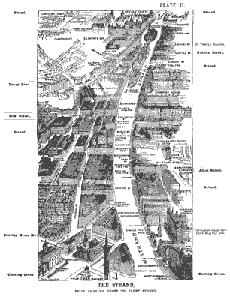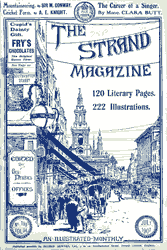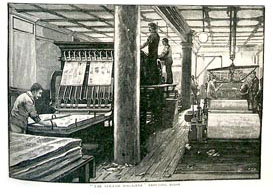|
A "bird's-eye view"
of the Strand (1892) |
Founded in January 1891,
The Strand Magazine, named after a fashionable London street,
was aimed squarely at its target audience's middle-class tastes.
A typical issue might feature illustrated
articles of scientific and historical interest, a series of humorous
cartoons on a theme, pictures of famous people at different ages
(from toddler to adult), interviews with celebrities, a treatment
of a controversial issue of the day, and one or more pieces of fiction.
The factual articles were not too complex, and the fiction tended
to feature a mystery or "twist" to keep the reader interested. Nevertheless,
the articles were skillfully edited and stylishly presented in a
sophisticated format. Whoever bought a copy of The Strand
felt like a true Londoner.
| |
A
cover of The Strand Magazine from 1907 | Conan Doyle wanted fame
and success as a writer, and he went about achieving it more systematically
and shrewdly than he had approached his medical career. First, he
hired a literary agent, A. P. Watt, the very first man to advertise
that sort of service. Then, he thought long and hard about what
might appeal to his audience. Fearing that serialized stories would
be of limited use to a reader who missed an issue, Conan Doyle decided
to write stories that could be read independently but whose central
character would be the same. Sherlock Holmes, who had already been
the hero of Conan Doyle's novels A Study in Scarlet and
Sign of the Four, seemed like a good candidate for such
a series. Conan Doyle's agent submitted "A Scandal in Bohemia" to
The Strand. It was accepted, and Conan Doyle was contracted
to write a total of six stories featuring his detective.
|
The
Strand's printing room |
Because of the very small
success achieved by his first two Holmes novels, Conan Doyle's expectations
were low. When "A Scandal in Bohemia" appeared in July 1891, during
The Strand Magazine's first year, it was an instant hit.
In assuring his own future, Conan Doyle also assured the grand success
of The Strand, which ran monthly until 1950.
| 








